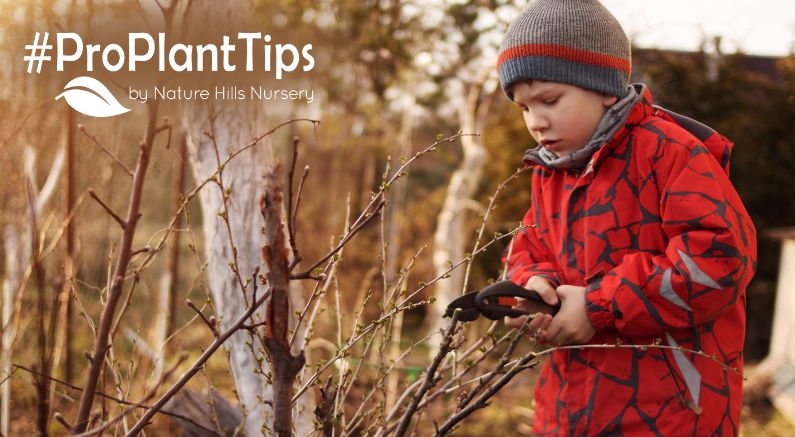Pruning Shrubs in Fall (and Which to Avoid)
Fall pruning can either refresh your landscape or accidentally ruin next year's blooms. Understanding which shrubs to prune and when makes all the difference. Let's clear the confusion so you can confidently shape your garden before winter sets in.
By pruning the right plants at the right time, you'll encourage strong growth, better airflow, and gorgeous flowers next season, without sacrificing buds or form.

- Shrubs You Can Prune in Fall
- Shrubs You Should NOT Prune in Fall
- Smart Fall Pruning Tips
- Landscaping Bonus
- Fall Focus Means Spring Rewards
Why Prune Now?
Shrubs that bloom on new wood respond beautifully to light trimming in fall. Cutting them back helps remove tired growth, shapes the plant before dormancy, and encourages strong, healthy shoots when spring returns. But for shrubs that bloom on old wood, pruning now would remove the very buds that hold next year's flowers, meaning fewer blooms and slower recovery in spring.

Shrubs You Can Prune in Fall
Flowering bushes that bloom on new growth can be pruned in the fall. These reliable bloomers produce flowers on new wood (fresh growth each year), making them ideal for shaping, thinning, or rejuvenating before winter. Light trimming keeps them vigorous and ensures a full, lush appearance next season.
-
Butterfly Bush (Buddleia): Cut back old canes by about one-third to refresh growth and promote stronger blooms. See our Butterfly Bush pruning guide for easy steps.
-
Summer-Blooming Spirea: Summer-blooming varieties (like Japanese Spirea) bloom on new wood and can be lightly trimmed in fall. However, spring-blooming Spirea varieties (like Bridal Wreath) bloom on old wood and should only be pruned immediately after flowering in spring, not in fall. Find more Spirea pruning here.
-
Chaste Tree/Bush (Vitex): Remove dead wood and tidy up its rounded form; these sun-loving shrubs stay denser and flower better next year.
-
Evergreen Shrubs (Boxwood, Arborvitae): Only trim stray branches to neaten the shape, avoiding heavy cuts that can expose tender inner growth to frost.
- Lavender and Rosemary: These herb plants benefit from fall pruning, as they may not withstand late winter pruning.
Shrubs You Should NOT Prune in Fall
These beautiful bloomers set their buds during the summer and early fall, meaning those buds are already waiting to open next spring. If you prune them now, you'll accidentally remove those developing flowers. Instead, wait until just after they finish blooming to shape or thin them. That's the perfect time for renewal pruning or rejuvenation pruning that keeps them healthy without harming next year's show.
-
Lilacs: Trim only immediately after blooming to preserve next year's buds. Reblooming Lilacs should be pruned after that first flush in spring and again after that fall rebloom.
-
Forsythia: These early bloomers form buds the previous summer, so fall cuts mean no yellow flowers in spring.
-
Rhododendrons and Azaleas: Wait until after flowering in the spring; pruning now can reduce both blooms and structure. Fall pruning removes the flower buds that open in spring, so only prune right after the first flush fades.
-
Roses: Avoid pruning until early spring. Only remove dead, excessive, and broken branches before winterizing in the autumn.
-
Oakleaf Hydrangeas: These bloom on old wood, so they should be shaped right after flowering in summer instead of fall. Smooth (Hydrangea arborescens) and panicle (Hydrangea paniculata) Hydrangeas bloom on new wood and can be pruned in late winter or early spring, not fall, as heavy fall pruning can stimulate tender new growth vulnerable to frost damage. Find Hydrangea pruning tips here.
-
Viburnums: Prune only after spring bloom to avoid cutting off fragrant flowers, and use renewal pruning instead to avoid removing the bird-friendly berry clusters.
-
Mock Orange: Another old-wood bloomer; prune right after flowering to preserve fragrance and form.
- Weigela: Wait until late spring (after flowering for reblooming types) to shape, since it forms its buds during the fall months.
Rule of Thumb:
If a shrub blooms in early spring, don't prune in fall. Wait until just after it finishes flowering or after deadheading to keep the shape neat and tidy.
If there is damage or disease, any time is the right time to prune!
Smart Fall Pruning Tips

Before you grab your pruners, take a moment to plan your approach. Thoughtful pruning keeps plants healthy, attractive, and resilient through winter's chill.
-
Remove only the 3 D's: Dead, damaged, or diseased wood. This is part of good pruning practice all year.
-
Use sharp, clean pruners. Dirty tools spread disease and can damage bark.
-
Avoid heavy pruning: Late cuts can stimulate tender growth that won't harden before frost. Never remove more than one-third of a shrub at any time.
-
Mulch afterward: A 3–4 inch layer of mulch stabilizes soil temperature and conserves moisture.
- Water well before the ground freezes: Proper winter watering helps plants handle cold stress and windburn. The right way to water will help them thrive.
Fall Focus Means Spring Rewards

Thoughtful fall pruning sets the stage for a spectacular spring. By trimming with care, you'll preserve your shrubs' structure, protect future blooms, and promote strong, healthy growth. Follow up with proper watering and a layer of mulch to help them thrive through winter's chill. A little effort now brings big rewards later!
Prune less, enjoy more, and get ready for a garden that bursts with life come spring!
Happy Planting!

